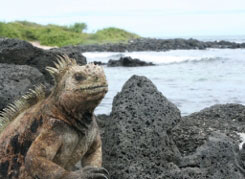A Career Well-Lived
Susan Cotter’s lasting gifts to animal and human health
By Catherine O’Neill Grace

Sue Cotter with her Boston terrier Brady. Photo: Alonso Nichols
The veterinary life began quite early for Susan M. Cotter, who started working in a clinic in her hometown outside of Chicago way before she was old enough to drive. “I had to get a work permit because I was under 16,” she says.
“I still keep in touch with Dr. Nevin Berglund, the veterinarian I worked for then,” says Cotter, a Distinguished Professor and clinical oncologist at the Cummings School. “He was a big part of my wanting to be a veterinarian. He let me come to his clinic and just watch. He didn’t have runs put in yet, so he let me walk all the dogs.”
Cotter continued to work summers at the clinic throughout high school and college and while attending veterinary school at the University of Illinois. After earning her D.V.M. in 1966—one of just four women in a class of 41 students—she headed east for an internship at Angell Memorial Hospital in Boston and stayed on the clinical staff there through the 1970s.
She arrived at Tufts in spring 1981, less than two years after the university opened New England’s only veterinary school. “We didn’t yet have the small animal hospital,” Cotter says. “I was charged with setting up the small animal medicine course for the third-year students, which was about a hundred hours of lecture. Dr. Jim Ross [considered one of the school’s founding fathers] and I just kind of created it out of nothing. There was no curriculum committee, and we have built on it ever since.”
Now, nearly three decades later, Cotter has decided to call it a career. Well, almost. Even though she’ll officially “retire” at the end of June, she says she’ll remain active in educating Tufts veterinary students. Beyond the Grafton campus, the veterinary profession itself has been the beneficiary of Cotter’s work, which has advanced animal and human health.
And it all started with the cats.
At Angell, Cotter and the Harvard virologist Max Essex pursued research on cats infected with feline leukemia (FeLV), a retrovirus. Their work was the first to show that viruses that cause leukemia are contagious and suppress the immune system, causing other health problems. The research led to improved diagnostic tools and a vaccination for FeLV. Cotter calls it “the most important work” she has done.
More significantly, their discoveries had profound implications for people infected with acquired immune deficiency syndrome and spurred the pace of human AIDS research. Cats with feline leukemia, it turns out, were excellent animal models for studying human HIV.
In veterinary oncology, Cotter’s work led to clinical research on using chemotherapy to treat animal cancers. In the 1980s, she published some of the best early descriptions of how canine and feline lymphoma respond to chemotherapy, and those treatment protocols were adopted by practicing veterinarians around the world.
“Her work has had an immeasurable impact on feline health and welfare,” says John Berg, chair of clinical sciences at the Cummings School.
Cotter’s breakthroughs in research and clinical care have earned her numerous accolades: Woman Veterinarian of the Year, Beecham Research Award, Purina Research Award, Mark Morris Lifetime Achievement Award, the NIH Transfusion Medicine Academic Award and the Distinguished Service Award from the Association for Veterinary Hematology.
But, she says, her greatest professional moments have come in the classroom. “I love the teaching,” she says. “It’s one of the main reasons I came here, and it’s now what I enjoy most. After I retire I will stay active in some way in problem-based learning classes. It’s a lot of fun getting to know the first-year students when they come in, and I plan to continue to do that.”
She won’t have a long commute. Cotter and her husband, retired physician Richard H. Seder, live in North Grafton, about five minutes from campus.
She’ll also take time to return to another of her childhood interests. “I grew up with a Boston terrier that I used to show in obedience competition,” she says. “That was mostly in late grade school and high school. For years, I had a cat. Then I got married, and my husband had a cat, so we had two cats.” After their last cat died a couple of years ago, she and her husband switched species. She’s now showing their Boston terrier Brady in obedience competitions.
This article first appeared in the spring 2010 issue of the Tufts Veterinary Medicine magazine.


